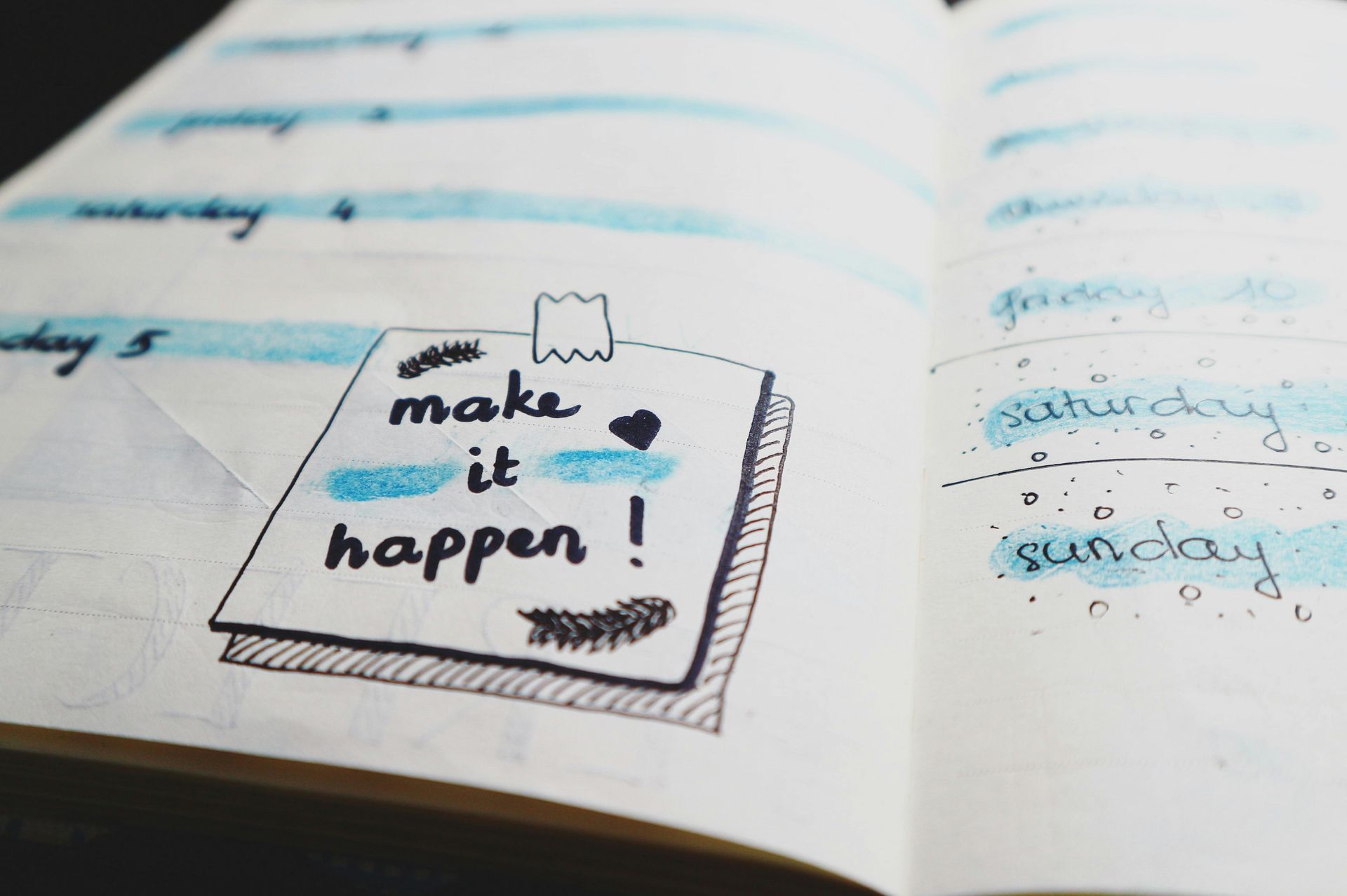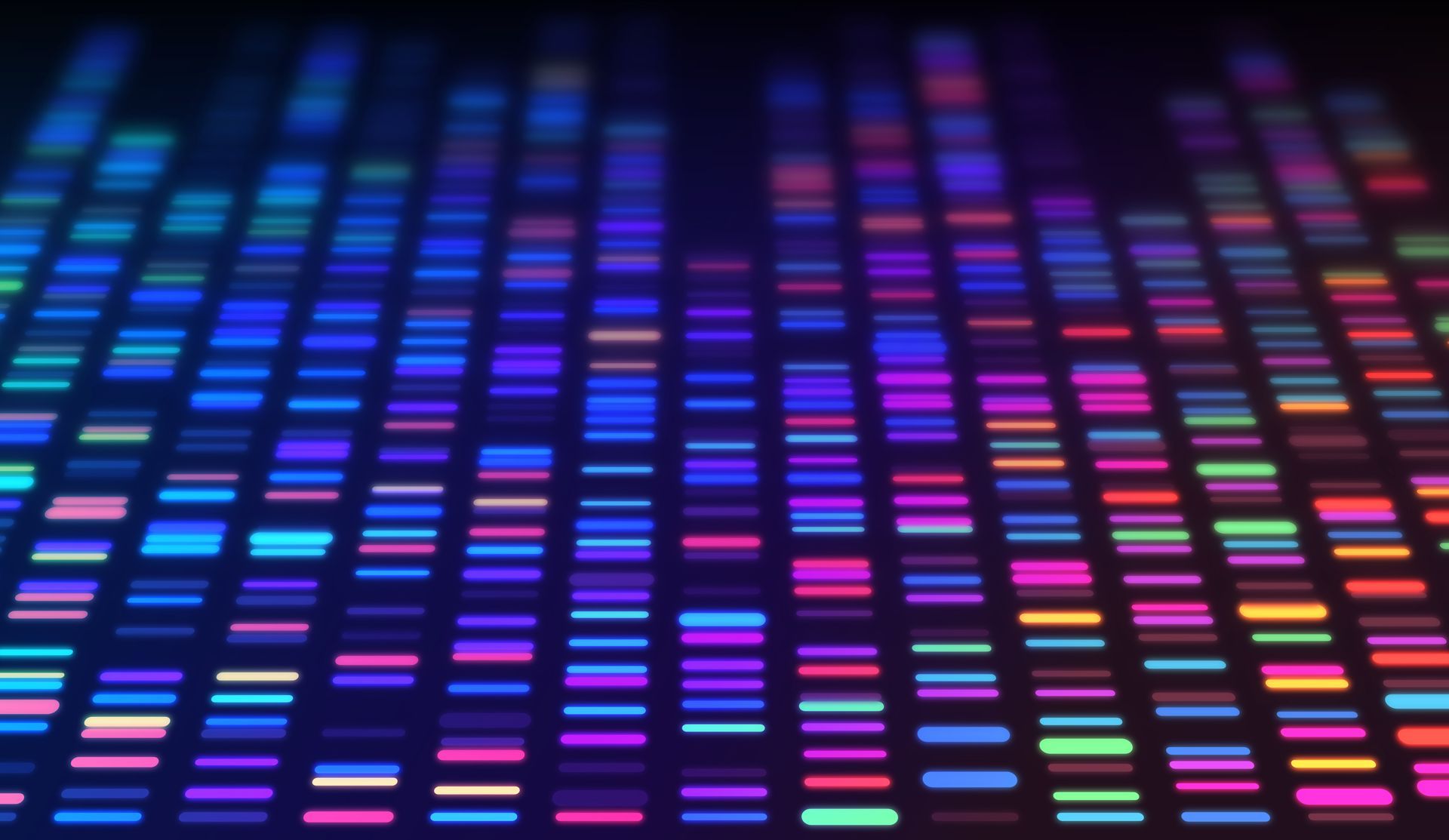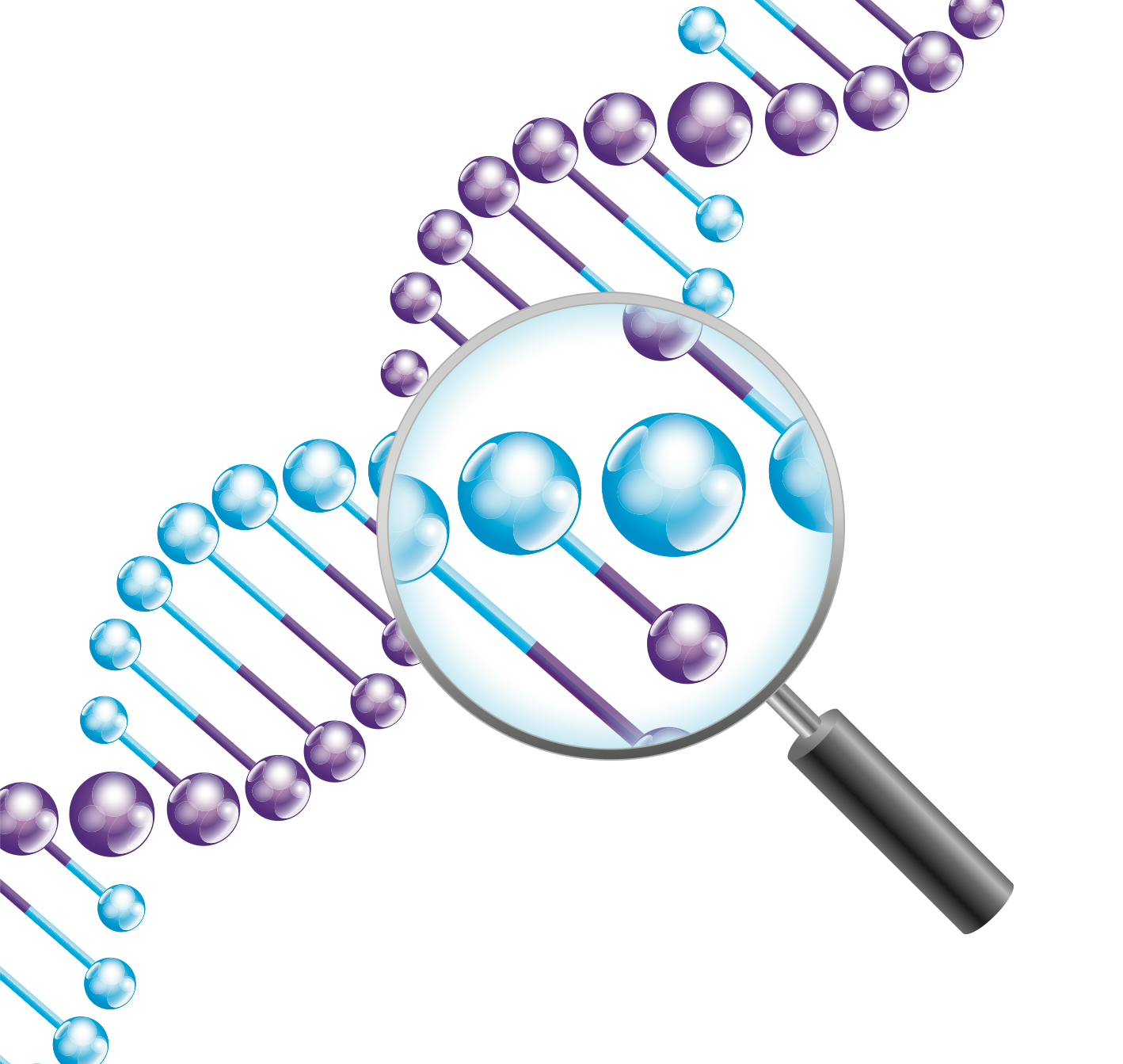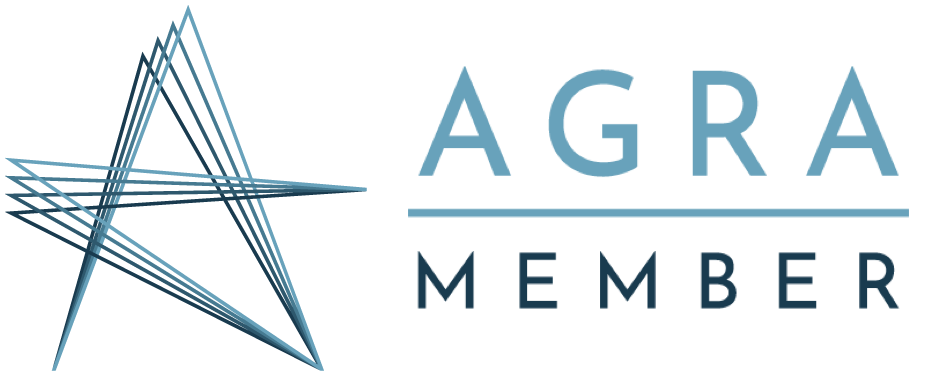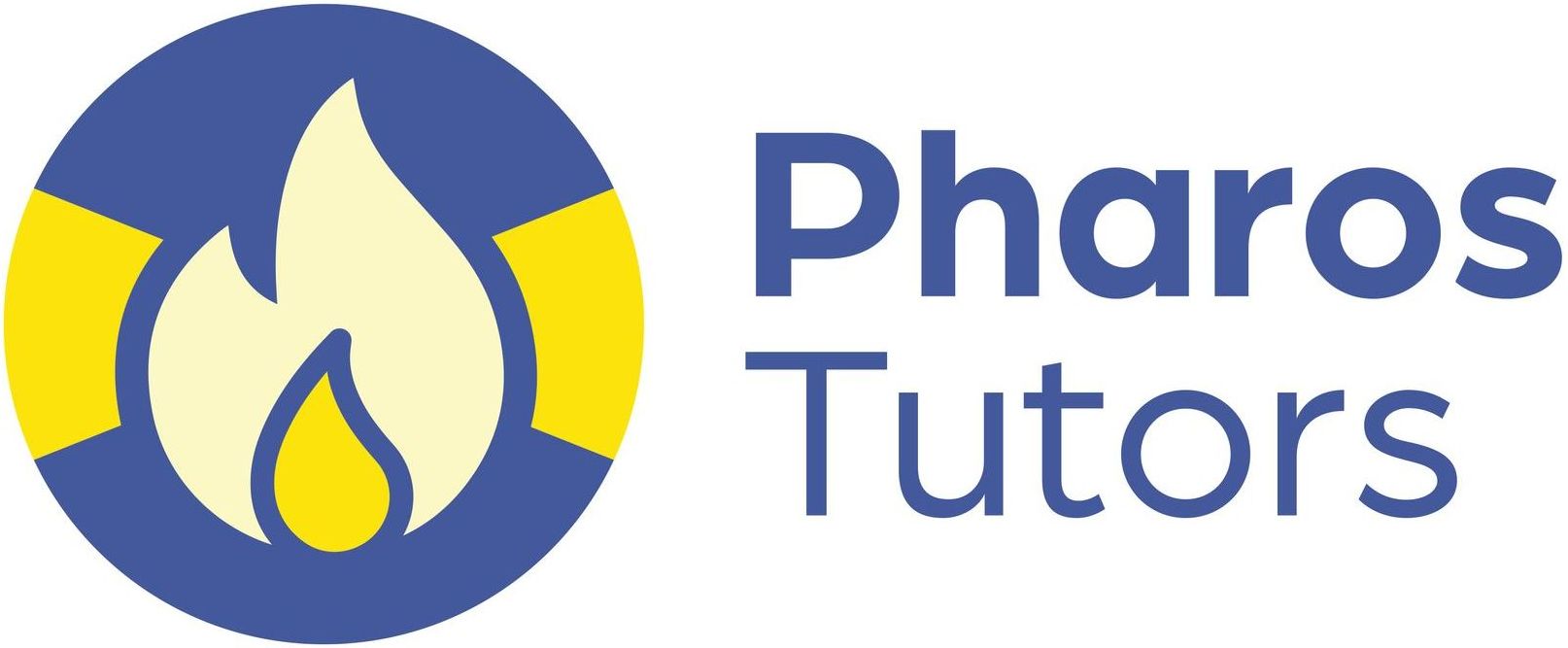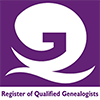Demystifying DNA 4: autosomal DNA tests
Originally posted 6th September 2018, updated 4th October 2024.
In my series of posts about Demystifying DNA testing for use in family history this is probably the type of testing most people want to hear about: autosomal DNA testing. In other words, the tests used by Ancestry, 23andMe, My Heritage, Family Tree DNA (the Family Finder test) and Living DNA to find matches with close relatives, matches where the common ancestor is only 5-7 generations ago. Autosomal DNA testing is also known as “close cousin” testing, because it is used for closer generations than Y-DNA and mtDNA.
This is the type of testing taken by the highest number of people and the type of testing most likely to generate matches to your own known family names.
Before we get into where to test and how to use your matches we need to look at the science some more to ensure we will get the most from the data.
Autosomal DNA: The “Sciencey” Bit
Remember from the first post in this series the image that showed your autosomal DNA? Here is it again:
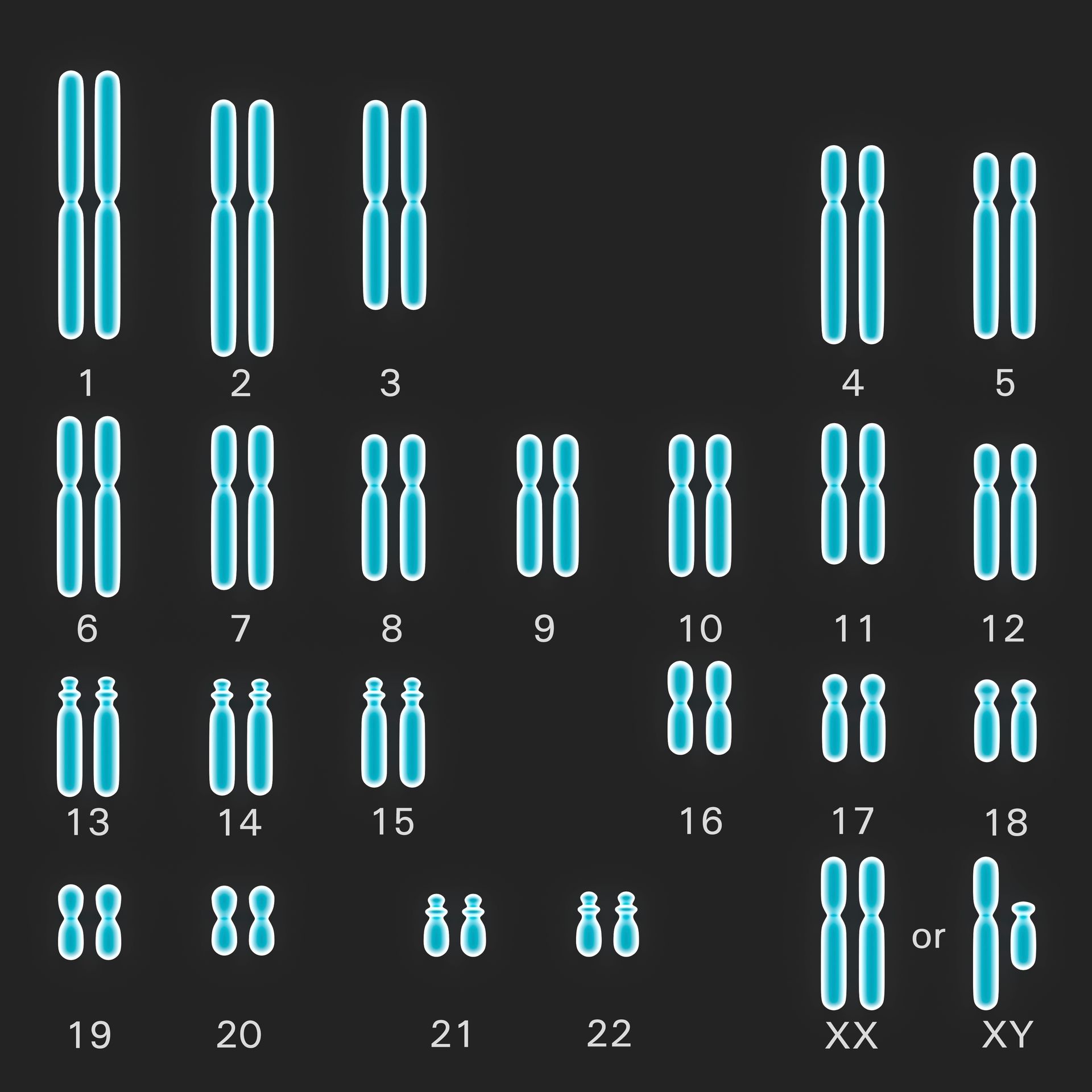
Here we are interested in the numbers 1 to 22: our 22 pairs of autosomal chromosomes.
For each pair, one chromosome came from our father and one from our mother, in its entirety. So, for example, looking at Chromosome 1, perhaps the left hand chromosome came from our father and the right hand side from our mother.
It is how we inherit autosomal DNA that makes it such a powerful tool for use with family history research.
The Inheritance of Autosomal DNA
The creation of eggs and sperm, in which DNA is passed from parent to child, occurs by a process called meiosis. During meiosis each chromosome is duplicated resulting in four copies of each chromosome, two paternal copies (in blue below) and two maternal copies (purple). DNA is then exchanged between the four copies, a process called recombination, which essentially mixes up the paternal and maternal DNA. Only one of the four chromosomes is passed on in the egg or sperm. You don’t need to worry about the detail, the important part is that the two of each chromosome a parent has are mixed up so that a child receives a combination of both.

Let’s take this a step further with an example: the descent of DNA from a couple, John and Mary. We will just look at one chromosome pair but the same principle applies to all 22 chromosome pairs. In all cases we will assume that the left chromosome came from the father and the right from the mother. So, John’s blue chromosome is from his father and the purple from his mother, and so on.
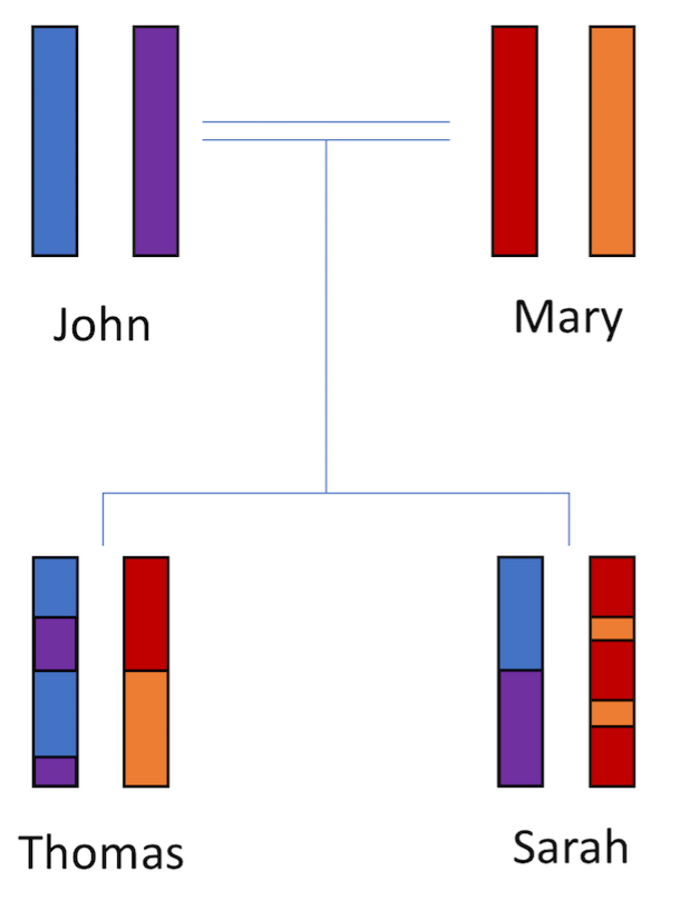
John and Mary have two children: Thomas and Sarah. Each child gets 50% of the DNA from their father and 50% from their mother, but in different combinations. Thomas gets two sections of blue from John and two sections of purple. Sarah gets the top half of the blue and the bottom half of the purple. They have each inherited DNA from their father but they have not inherited exactly the same DNA. The way in which they inherit from Mary is also different from one another. On average siblings share about 50% of their DNA but there is a range, as we will discuss further later.
Next we look at the case where Thomas and Sarah and have children of their own:
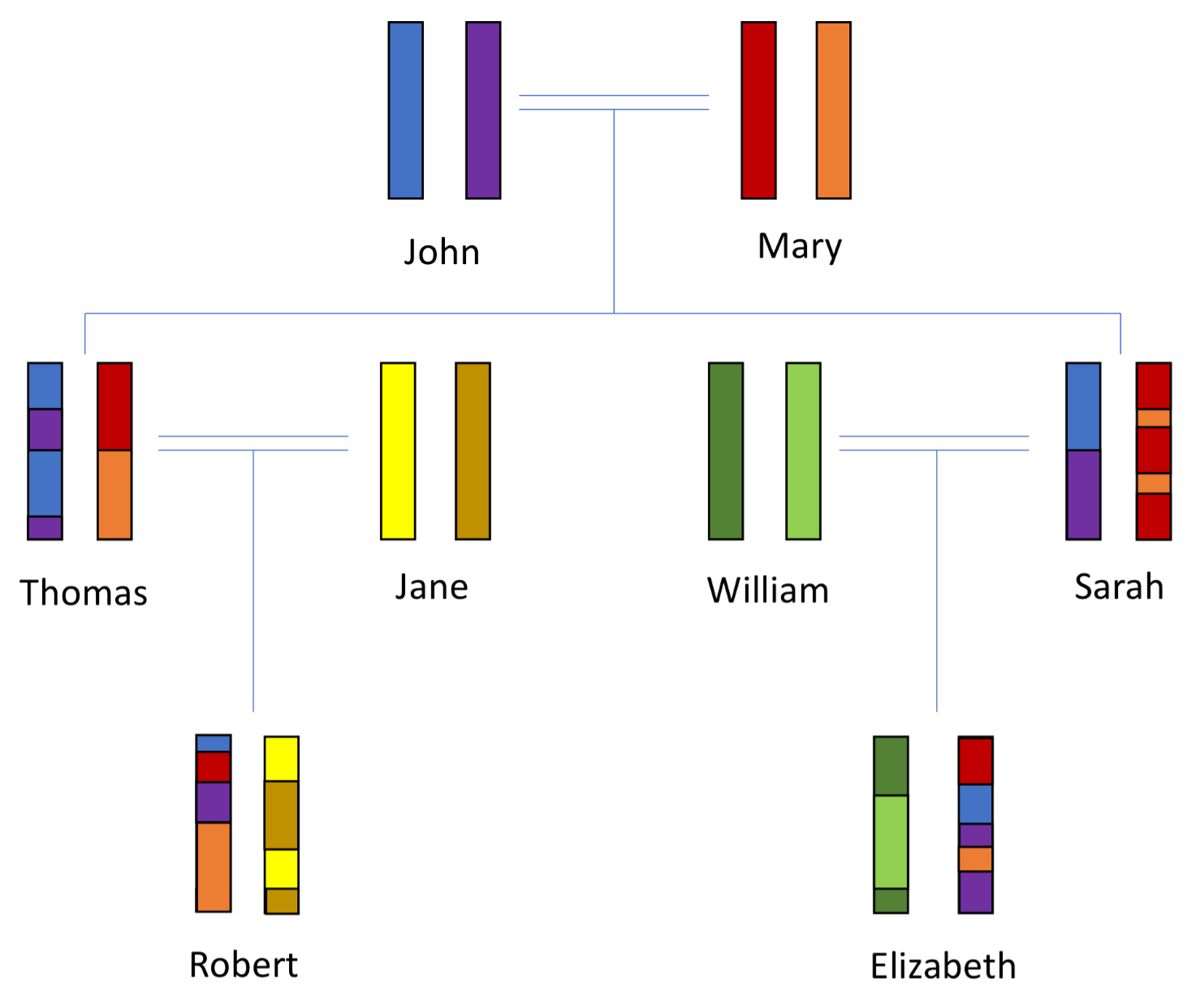
Here we see that Robert’s paternal chromosome (the one on the left) is a combination of the two chromosomes for Thomas. He has some sections, or segments, of DNA from both of John’s chromosomes, and some from both of Mary’s chromosomes.
Robert’s cousin Elizabeth, also has segments of DNA from all four of John and Mary’s chromosomes but Robert’s and Elizabeth’s DNA are different from one another. On average first cousins share 12.5% of their DNA.
There’s a really important point to note here. A grandchild CANNOT inherit DNA from his grandparent that was not passed from grandparent to parent. Look back to the example above. Robert cannot have the top portion of the purple chromosome of John’s, because John did not pass it to Thomas. Likewise, Elizabeth cannot have the bottom section of the blue chromosome, because John did not pass it to Sarah.
We have started to talk about the percentage of DNA you receive from different ancestors. The further back in time you go, the less DNA you share with your ancestors on average:
| Relation | Average % DNA shared |
|---|---|
| Parent | 50% |
| Grandparent | 25% |
| Great grandparent | 12.5% |
| Great x 2 grandparent | 6.25% |
| Great x 3 grandparent | 3.125% |
| Great x 4 grandparent | 1.563% |
| Great x 5 grandparent | 0.781% |
In fact, the amount you share with your distant ancestors eventually becomes so small that there is a chance that you will not share any DNA at all. This is the second important point: You do not inherit autosomal DNA from every one of your ancestors. Whilst all of your ancestors are included in your genealogical family tree, even if some of them are yet to be identified, not all of your ancestors are included on what we call your genetic family tree. The genetic family tree is shown below, DNA is only shared with those ancestors shaded in grey:
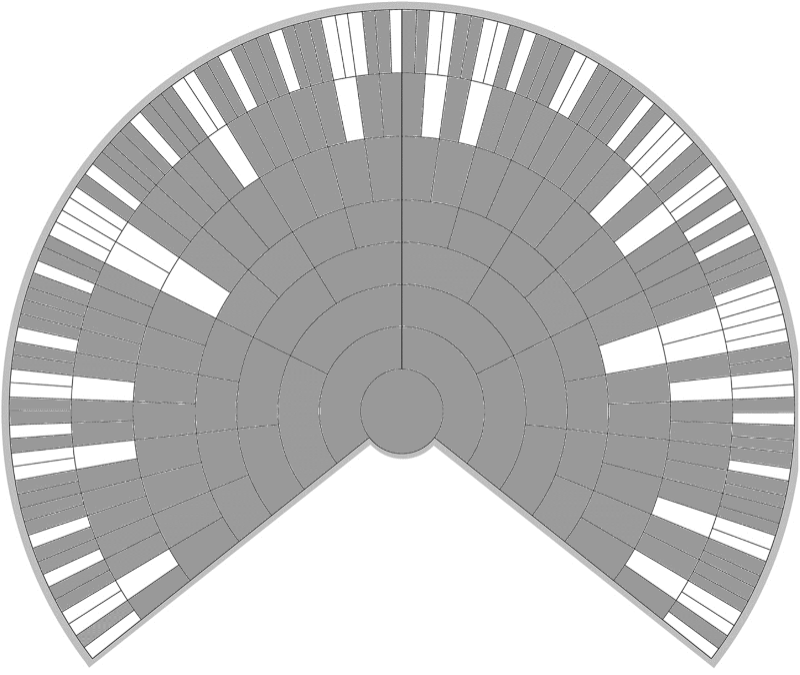
This could potentially be very frustrating if your aim was to find links to one of your great x 4 grandparents shown in white above. However, remember, the process of recombination is different each time. You may not have inherited DNA from that particular ancestor but your siblings, aunts and uncles etc may well have done. This is why it is always worth testing as many family members can you can.
Uses of Autosomal DNA
The primary use of autosomal DNA is for finding connections with those descended from common ancestors in recent generations, your close cousins.
Potential uses of this type of testing include:
- Confirming your family history research carried out so far using traditional research techniques
- Expanding your family tree by connecting to those with whom you share DNA
- Finding the answer to a particular problem or breaking down a brick wall
- Use by adoptees searching for birth relatives
Who can take a test?
Both males and females can take autosomal DNA tests and will find cousins in the same way.
The Data
So how do the tests work? When we talked about Y-DNA and mtDNA tests we talked about the raw data or comparing the raw data to reference standards. When your autosomal DNA is analysed data is collected at around 600,000-700,000 SNPs or positions. Rather than compare raw data the commercial companies do the data crunching for us using matching algorithms and we are presented with a list of matches. Here’s an example of some matches, taken from the Ancestry website:
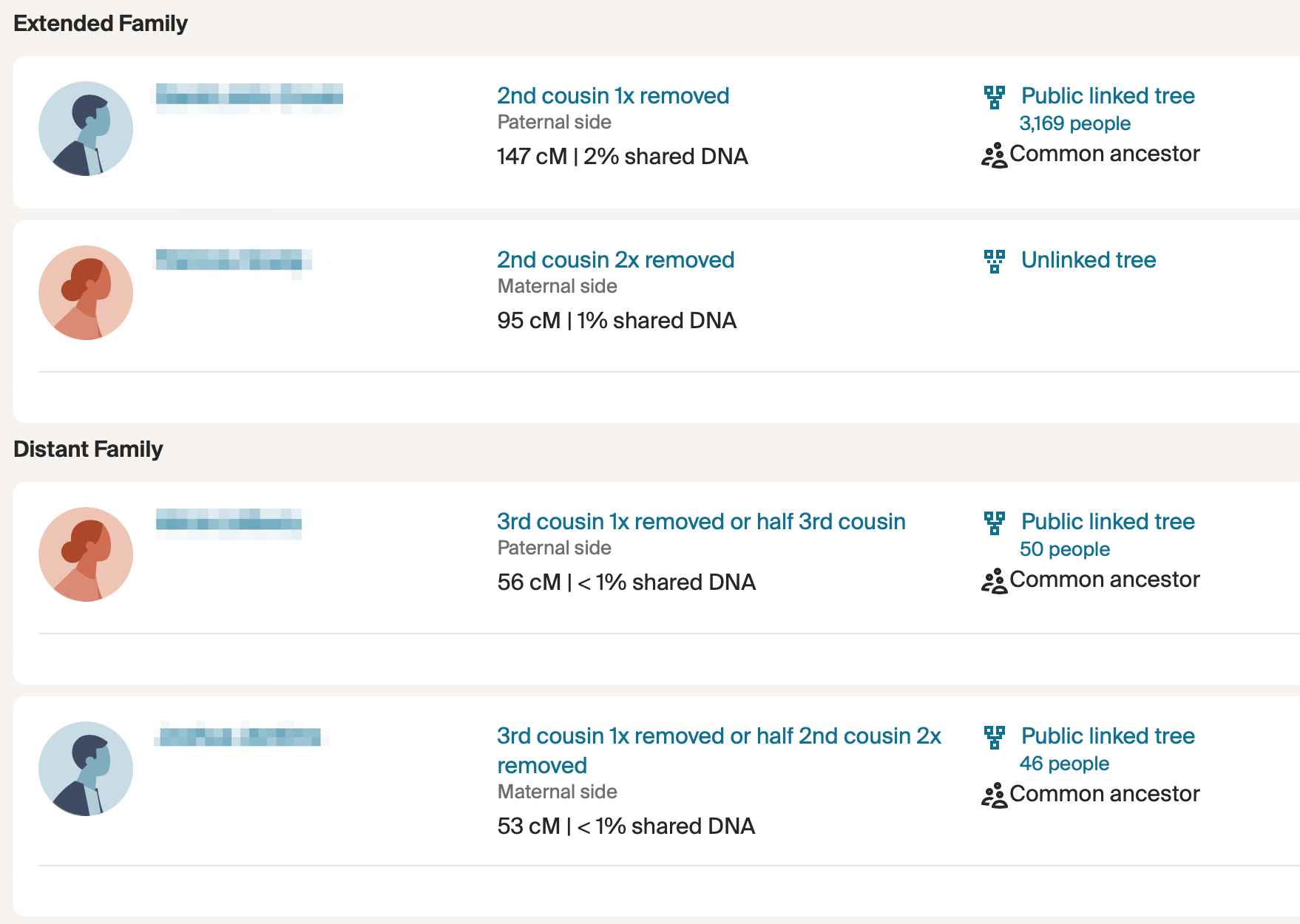
You can see that for each match there are one or more suggested relationships. The average amounts of DNA shared with some of your relatives are shown in the table below (from the ISOGG website):
| Relation | Average cM DNA shared | Average % DNA shared |
|---|---|---|
| Parent | 3400 | 50% |
| Sibling | 2550 | 50% |
| Grandparent | 1700 | 25% |
| Aunt / Uncle | 1700 | 25% |
| Niece / Nephew | 1700 | 25% |
| Half Sibling | 1700 | 25% |
| First Cousin | 850 | 12.5% |
| Second cousin | 212.5 | 3.125% |
| Third cousin | 53.13 | 0.781% |
| Fourth cousin | 13.28 | 0.195% |
| Fifth cousin | 3.32 | 0.0488% |
You can see that some relationships share about the same amount of DNA. In fact, beyond the parent child relationship, there is always more than one possible relationship for an amount of shared DNA. Don’t worry too much about what a cM is at this stage, just think of it as an amount of DNA.
For the Ancestry DNA matches shown above, some matches have a single relationship given, some have a couple of options. What you are seeing here is the website trying to help you by giving the most likely relationship, but do not take this as the definitive answer. If you click on any of the relationships shown you will arrive at a screen with more detail. This is what is shown for my 147 cM match:
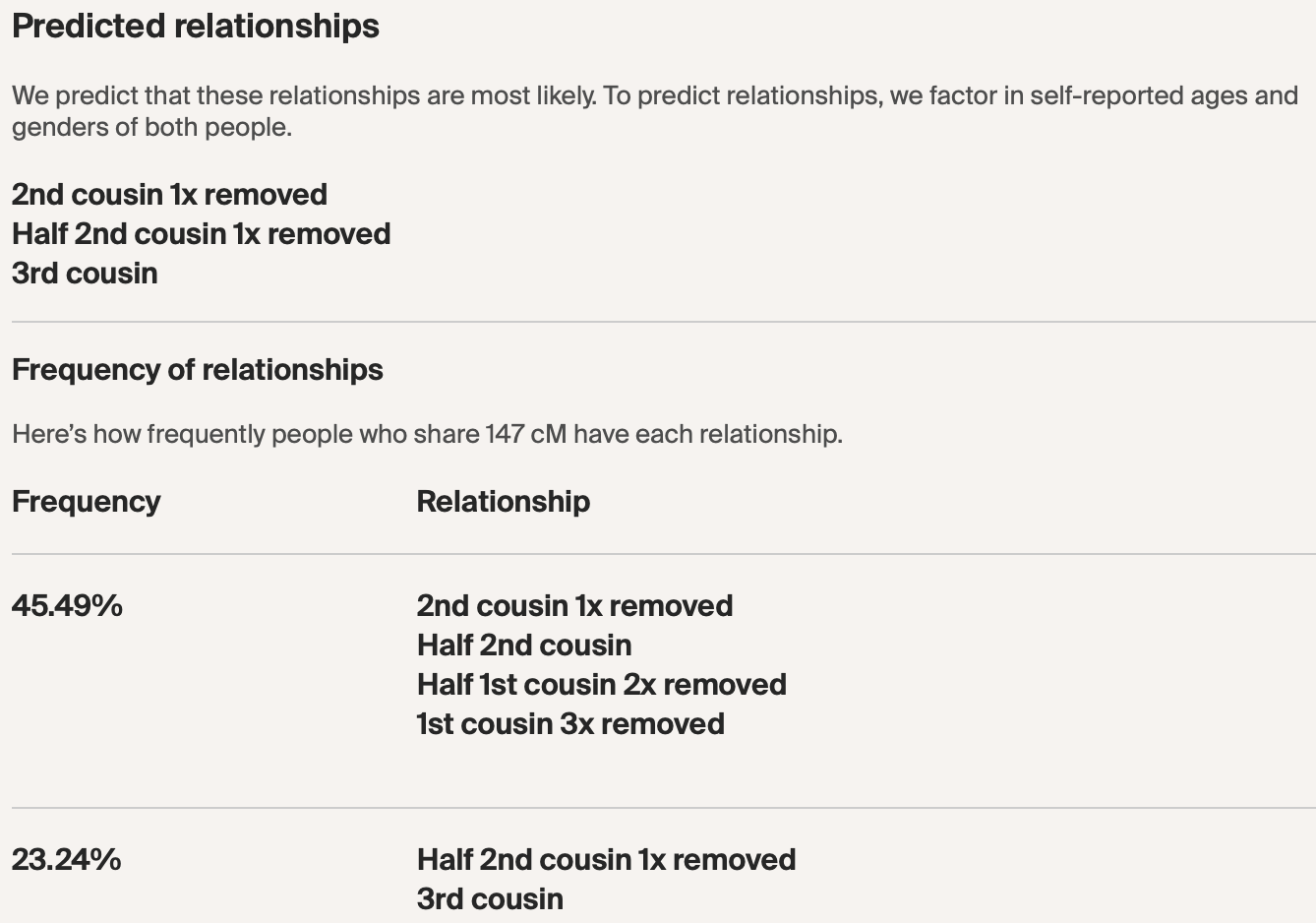
The screen actually cuts off and needs scrolling, and the number of relationships grows until there are relationships with a 0.03% likelihood. This is all starting to look very complicated isn't it? I mention this because it can be too easy just to look at your match list and then spend hours trying to fit a match into the "correct" relationship in your family tree and failing, simply because there are also other correct answers. By all means use the most likely relationship as your starting point when trying to fit match into your family tree, but bear in mind that there are likely to be other possibilities too. There are some great tools for looking at the relationships likely from a given amount of shared DNA, the most popular are the Shared cM Tool and the My Heritage cM Explainer. You can read more about using these tools in an earlier blog post.
If you get confused about first, second and third cousins or what once or twice removed means, the following table may help:
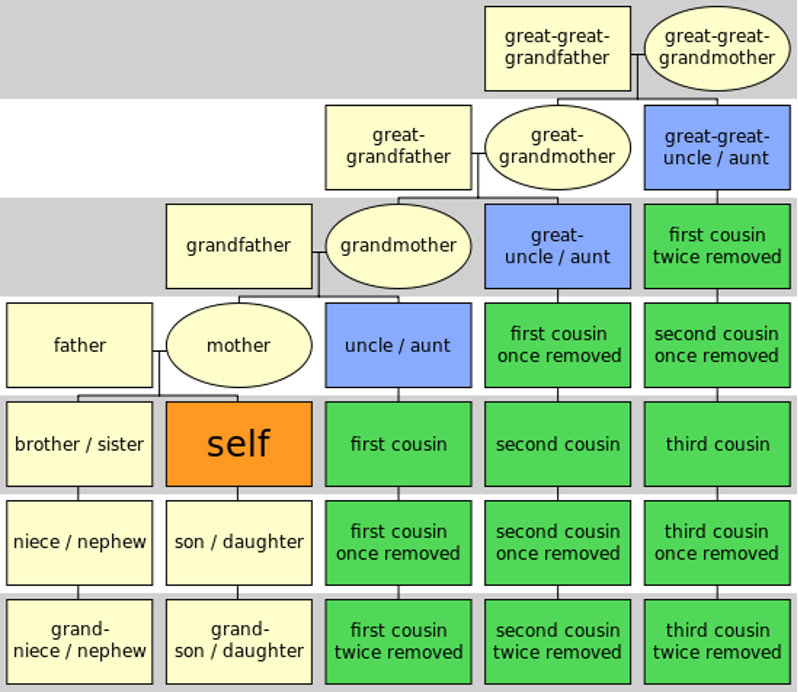
Investigating matches
Once you have discovered some matches to your DNA data the next step is to start to work out how they connect to your family tree. They may have a family tree uploaded themselves and you may see familiar names. You may feel sure you know where there is a link and either need to work on your tree or theirs to bring the two together.
The ease with which you can link to your connections will depend on how extensive the research is so far by both of you and how distant the proposed relationship. You can improve your chance of success with working out who your matches are by working on descendant lines in your family tree to identify as many cousins as you can on your lines of most interest.
Another very powerful tool is to look at shared matches, that is people who share DNA with you and the match you are interested in. If your match of interest does not have an extensive family tree, your shared matches may do. You can take this a step further by target testing known relatives from the part of your family tree of interest. Some of the websites have already started this process by attempting to split your matches into your paternal and maternal side. Any shared matches in common will likely share ancestors in this part of your family tree.
Your can start to group matches that you know to be from one part of your family tree on the website with coloured tags or use something called clustering to have tools form those groups for you. This kind of analysis is beyond the scope of this introduction to testing.
The Testing Companies
Autosomal tests are available at all of the big 5 DNA companies:
- Ancestry DNA: offers matches and amount of shared DNA but gives no chromosome data. Data can be downloaded for upload elsewhere.
- 23andMe: offers matches and amount of shared DNA but (currently) gives no chromosome data. Data can be downloaded for upload elsewhere.
- Family Tree DNA and My Heritage: offer matches, amount of shared DNA and chromosome data. Both have has a chromosome browser to examine data in more detail, which adds weight to your comparison of family trees. Data can be downloaded for upload elsewhere.
- Living DNA: more focus on providing estimates of geographical origins and its selling point is that is provides a more detailed breakdown for those with UK heritage than other companies. Some matching data. Data can be downloaded for upload elsewhere.
Family Tree DNA, My Heritage and Living DNA offer free upload of data from other companies (though you will have to pay to use all of the tools available).
In Summary
This is only an introduction to autosomal DNA testing, to give you a flavour of what can be achieved. There is much more to add and many tools and external websites that can be used to look at the data and matches in more detail.
If you want to learn more you may be interested in my five week online course with Pharos Tutors®, Demystifying DNA for Family Historians.


